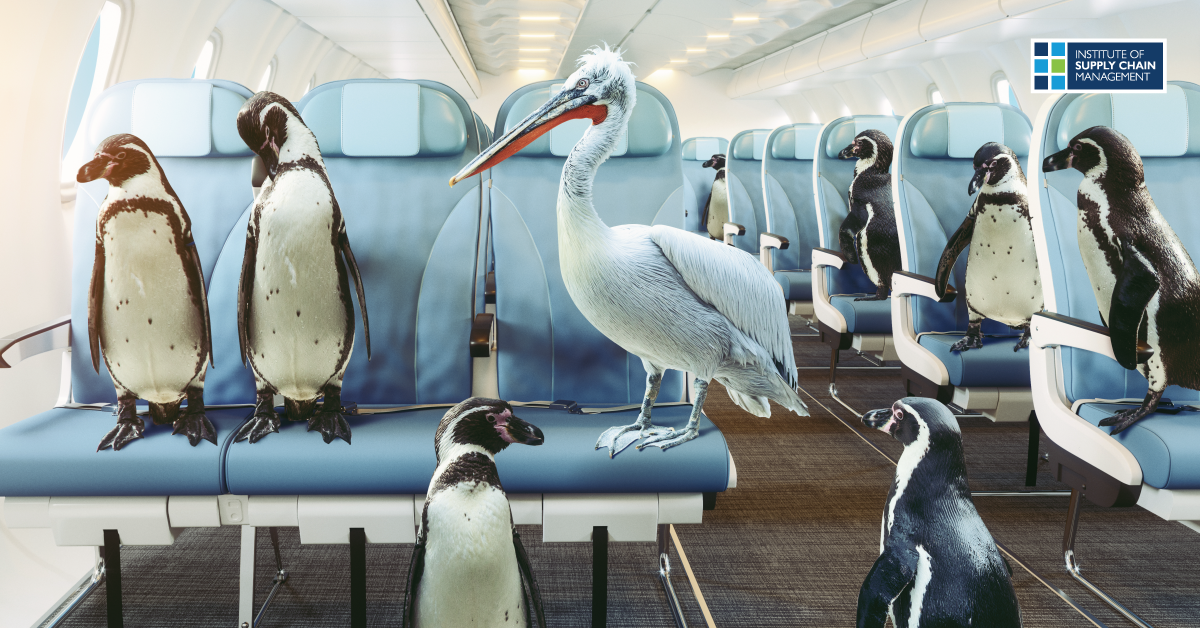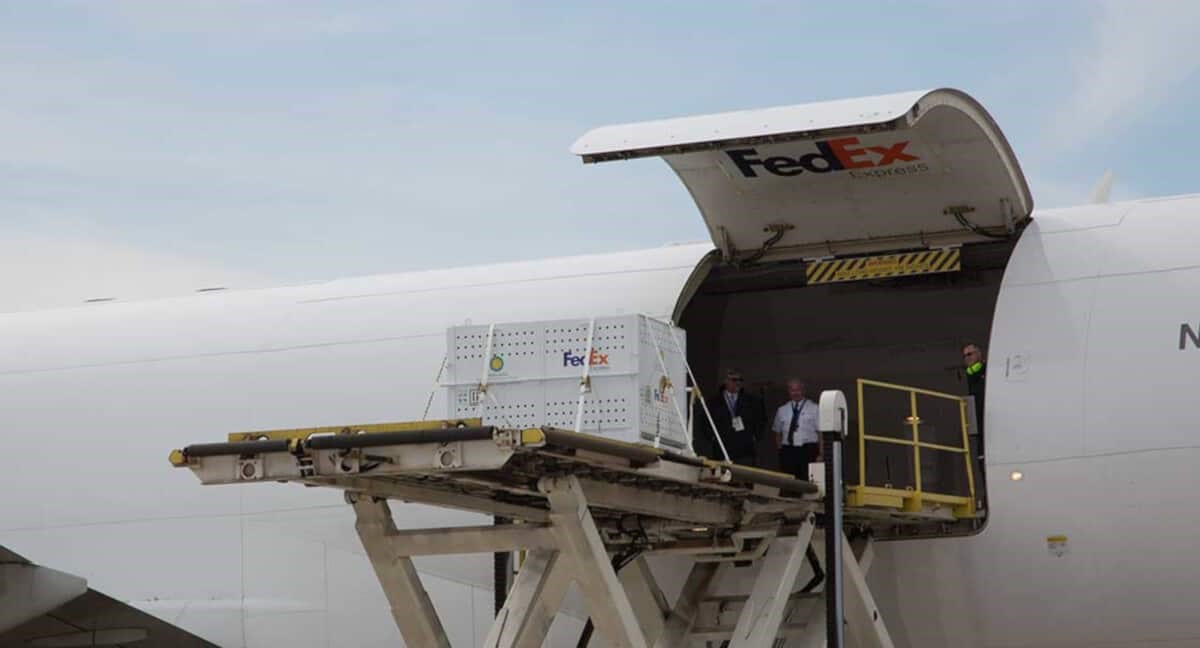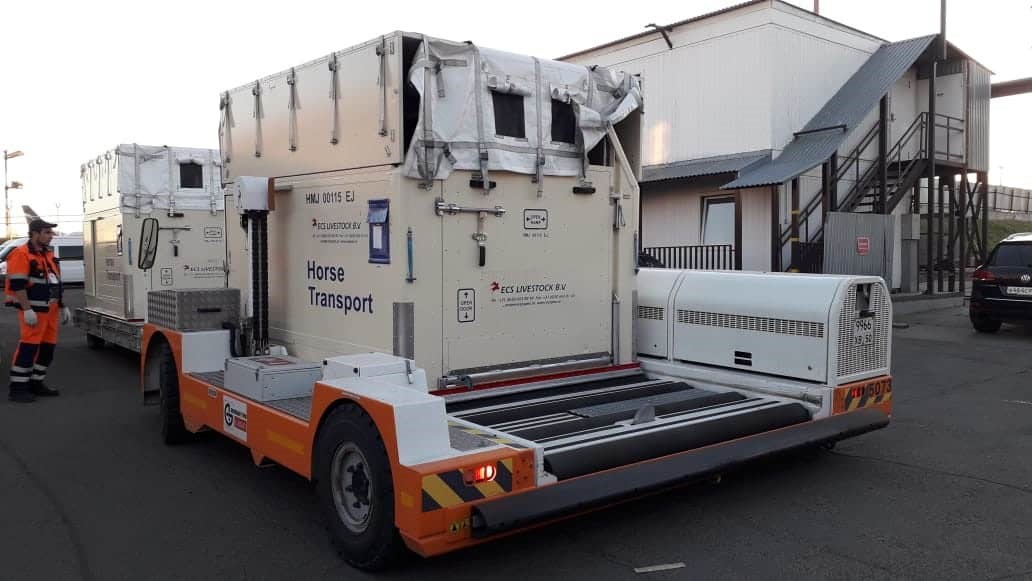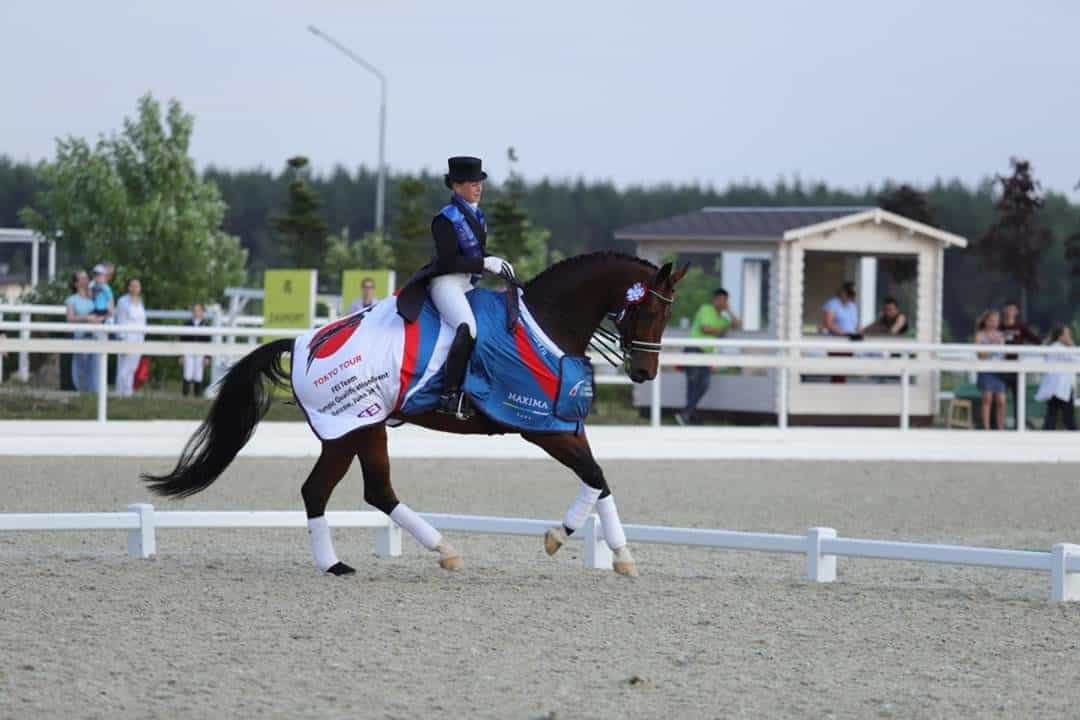
If you are ever on an aeroplane and see a dog crate in a seat near you, how do you know what is inside? Is it a dog? A cat? How about a sloth? That innocent-looking dog crate may contain something a passenger may not be prepared for, but it may generate a great story about that time they sat next to a sloth on an aeroplane. It sounds like the opening line of a bad party joke, but the possibility is quite real.
“We had an import of two sloths from Panama, and they did not want them to be stressed because these were hand-raised animals used to being carried around by people,” explained Rachel Watkins Rogers, registrar and records coordinator for Zoo Miami. “We had special permission from the airline and had six seats – we had to buy two seats [for personnel] and four seats for the sloths.”
The sloths declined the free peanuts.
Watkins Rogers is responsible for securing the permits necessary for domestic or international shipping of animals for the Zoo. She is also the course administrator for the AZA Animal Transport for Animal Care Professionals (ATACP). She tells FreightWaves that the safe transport of live animals requires constant planning that can take up to a year or more and cost hundreds of thousands of dollars.
“It can take as much as a year [to transport an animal], depending on whether you need a permit,” she said, and the detailed process involves dozens of people, including veterinarians, shipping coordinators, trainers, supervisors and more. “Everybody has some part to play in that process, and until everything is done in the correct order, you can’t move forward.”
Zoo Miami transports hundreds of animals annually and participates in international release projects such as the Puerto Rican Crested Toads project in Puerto Rico and various bird species release projects. Watkins Rogers, who has been involved in transporting animals since 2001 and has worked at zoos since the 1970s, said Zoo Miami ships mostly birds but has been involved in sending frogs to France and bringing an elephant to Miami from Australia.
It’s better to fly
“The preferred method is air because that is the quickest and most humane way to ship animals because they spent less time in the crate,” she said. “However, some animals are difficult to transport by air.” These would include venomous animals or rhinos, which require specialised shipping services.

(Photo: APL Shipping)
Animals need specialised containers, few more substantial than that required to transport a giraffe.
“Increasingly, [we are moving] more shipments ourselves because a lot of people in the zoo industry are concerned because some of the policies are making it more difficult to ship animals,” Watkins Rogers said.
The International Air Transport Association (IATA) and the Animal Transport Association (ATA) have recently joined forces to encourage industry adoption of The Center of Excellence for Independent Validators for Live Animals Logistics (CEIV Live Animals). This certification, which Air Canada (OTC: ACDVF) is the first to have achieved, dictates safe and humane standards for transporting animals.
“Information, education and training of people involved in animal shipping is an absolute requirement,” Filip Vande Cappelle, president of ATA, said in the June 2019 announcement. “To secure the highest possible welfare of animals in transport, one needs high standards all along the logistics chain. Thanks to IATA, these standards are available and, rather than reinventing the wheel, ATA has chosen to collaborate with IATA to get these standards implemented as widely as possible amongst our members through encouraging adoption of CEIV Live Animals.”
Watkins Rogers said that many animals require custom crates, and trainers may travel with the animals if necessary. In most cases, trainers will work with the animals before shipping to ensure they are comfortable being inside their crates.
“If the animal starts getting stressed out, its core body temperature can increase [and put it in danger],” she explained.
One of the biggest challenges is not moving the animal; it is securing the necessary permits and other steps required to ensure a smooth process.
“The elephant that came from Australia was actually the first time any zoo in Australia had ever exported an elephant,” Watkins Rogers said. “And there are a lot of groups that monitor what you do.”
Before the Melbourne Zoo even approving the transfer of Ongard, the elephant, Zoo Miami had to renovate enclosures. Delays in permitting resulted in a rescheduling of the cargo plane and a loss of over $500,000. There was also the design of a protocol in case the elephant escaped. That cost was on the extreme end, but moving animals is not cheap.
“If we ship an animal it doesn’t matter how big or small, it could be $2,000, so if you ship a lot of animals, it can get awfully expensive,” Watkins Rogers said. “There are commercial land transporters that work just with zoos. Not as many [that work] with the airlines, but there are some shippers that have a pilot’s license that do some air shipments.”
A trusted transport partner
Having trusted partners is essential, and both Zoo Miami and Mystic Aquarium in Connecticut spoke glowingly of the vital role FedEx (NYSE: FDX) plays in the transport of live animals.
“FedEx is really great to work with; we’ve been working with them for a long time,” Dale Wolbrink, senior director of media relations for Mystic Aquarium, which moves mostly aquatic animals. “The animals are the first to go on to the plane and … are first off the plane and loaded onto trucks right away.”
“FedEx has a long history of providing safe travel for some of the world’s most delicate cargo, and we’ve worked closely with zoos and aquariums in the past to safely and securely deliver animals to their destinations,” FedEx spokesperson Rae Lyn Rushing told FreightWaves. “We have experienced teams of FedEx employees around the globe working collaboratively on these special shipments. Animal care experts are also granted special flight privileges to ensure the animals are well cared for.”
In some cases, FedEx donates the shipment costs as part of its FedEx Cares Delivering for Good Initiative. It did just that with Kali, an 800-pound female polar bear, who was orphaned in Alaska after a hunter killed her mother. Kali ended up at the Buffalo Zoo but needed transport to the St. Louis Zoo in 2015, which FedEx provided at no cost.
The company also provided a unique chartered service for 19 penguins and two sea otters from their temporary home in California, where they settled following their displacement from the Audubon Aquarium of the Americas in New Orleans after Hurricane Katrina. FedEx brought them home.
FedEx has also transported from Texas to California a two ½-year-old dolphin that was unable to swim due to injuries, a sea lion from Hawaii to Houston, and a pair of grizzly bears and two brown bear cubs from Anchorage, Alaska, to Oakland, California.

Bao Bao, a giant panda, is loaded onto a FedEx cargo jet for transport to China. (Photo: FedEx)
To transport Bao Bao, a giant panda from the Smithsonian National Zoo in Washington, DC, to China, FedEx did a unique wrap of a FedEx Express 777F aeroplane. (Video: FedEx)
Perhaps the most famous FedEx animal transport came in 2017. Aboard a special FedEx Express 777F plane, Bao Bao, a three ½-year-old giant panda, made the 16-hour, 8,600-mile trip from Dulles International Airport in Washington, D.C., to Chengdu, China. Bao Bao was born at the Smithsonian National Zoo, and she was accompanied on her journey to China by Marty Dearie, one of the keepers who had cared for Bao Bao since her birth, and Katharine Hope, a veterinarian at the Zoo.
Bao Bao travelled in a specially made 800-pound steel crate. Her human companions brought 50 pounds of bamboo, two pounds of apples, two bags of leaf-eater biscuits, cooked sweet potatoes and water for the trip to ensure Bao Bao’s comfort.
The panda is now a permanent resident of China’s Conservation and Research Center’s Nature Reserve.

FedEx transported Bao Bao from Washington, DC, to China, in one of the many instances of the airline moving live animals. (Photo: FedEx)
Seals take to the skies
The majority of Mystic’s shipments are pinnipeds like walruses and seals, and pilots are often able to lower the cargo hold’s temperature to help maintain a safe environment for the animals.
“We follow all of the IATA regulations, and within the guidelines, they have what is an appropriate carrier to move a specific animal,” Wolbrink said. “We have pre-made carriers for all our animals, so they are watertight. Pinnipeds need to remain cool. They have a layer of blubber that helps keep them cool in the water, and we can keep them safe within these containers. They have airflow, but they also have to be watertight. But most importantly, we keep them cool by including water. We put ice on the top of the containers that drips down on them.”
Like Zoo Miami, Mystic’s trainers work with the animals before transport to get them comfortable with containers. In most cases, both an animal expert and veterinarian travel with the animal and tend to it during transport, monitoring vital signs and general condition and well-being.
“They know the species very well, so they can [ensure it is safe],” Wolbrink said.
“[TRANSPORTING ANIMALS IS] A BIG DEAL FOR US; IT’S A HUGE UNDERTAKING. A TEAM GOES OUT before TRANSPORT TO SEE THE ANIMAL AND LEARN ABOUT THE ANIMAL. AN ARRIVAL TEAM IS WAITING, AND WE CONDUCT A 24-HOUR TRANSPORT CALL BEFORE TRANSPORT OF THE ANIMAL. WE MAKE SURE EVERY ‘I’ IS DOTTED AND EVERY ‘T’ IS DOTTED TO MAKE SURE EVERY SAFETY ASPECT IS ACCOUNTED FOR.”
DALE WOLBRINK, SENIOR DIRECTOR OF MEDIA RELATIONS FOR MYSTIC AQUARIUM
Laurie Macha, curator of marine mammals & birds for Mystic, noted that the aquarium does not sedate animals during transport. Instead, cabin pressures are set at appropriate levels, so the animals are not affected by higher altitudes. Most animals are transported in the forward holds of cargo bays that are heated and cooled and maintain pressures similar to the flight deck.
“[Transporting animals is] a big deal for us; it’s a huge undertaking,” Wolbrink said. “A team goes out before transport to see the animal and learn about the animal. An arrival team is waiting, and we conduct a 24-hour transport call before transportation of the animal. We make sure every ‘I’ is dotted and every ‘T’ is dotted to make sure every safety aspect is accounted for.”
Due to high costs and the impact on the animals, zoos and aquariums will try to work together on transport when possible, but “we will only transport marine mammals that are part of our accreditation,” Macha said. “There is no mixing of animals. You won’t find a transport that has marine mammals and horses.”
Like zoos, each animal species requires specialised transport. Fish may need only a rigid container that can hold water, but other animals require different types of containers. “Pretty much everything is custom-made,” Macha said.

The containers used to transport animals must be able to fly, but also be loaded onto various types of equipment, including straight box vans, flatbeds and specialised equipment at airports for transport from the hanger to the aeroplanes. (Photo: AirBridgeCargo Airlines)
The containers used to transport animals must be able to fly, but also be loaded onto various types of equipment, including straight box vans, flatbeds and specialised equipment at airports for transport from the hanger to the aeroplanes. (Photo: AirBridgeCargo Airlines)
While most of Mystic’s transports are conducted by air, planes don’t land at the aquarium, meaning truck service is required for the final leg of the trip.
“When the animals get off the plane, it’s all done by scissor lifts,” Wolbrink said. “The animal is lowered down to the ground area, there is a truck backed up to a loading bay and loaded with a forklift, and the cage is strapped down. There is a camera in back to watch the animal and thermometers to measure the temperature inside the truck.”
Some animals are transported in a box truck while others move on a flatbed, depending on the size of the cage. Mystic also has a specialised refrigerated pickup to handle rescues in the Northeast as part of its First Responder system.
One trick to keeping animals safe, though, is timing. “Generally, our transports are done outside of the summer months,” Wolbrink said. “We try to do them prior to the summer or over the fall when you are not dealing with the heat.”
Ready to run
Sometimes, the transported animal must perform upon its arrival at its new destination. This is true of racehorses which, like any finely tuned athlete are more attuned to stress that affects performance. Because of that, extra care is needed when transporting this type of cargo. AirBridgeCargo Airlines specialises in the transportation of live animals. It recently transported nine racehorses from Moscow, Russia, to Amsterdam, Netherlands, on board a Boeing 747-8F cargo plane.
“Equine transportation stands apart from other animal transportation as we are dealing with precious animals whose well-being and comfort influence sports success,” explained Fedor Novikov, deputy general director, special products and services for AirBridgeCargo Airlines. “We are honoured to be entrusted with the delivery of these horses. Our dedicated ‘ABC care’ team with well-set operational processes in place guaranteed safe journey of animals which partially facilitated their sports results.”

Racehorses, like this one that travelled from Moscow to the Netherlands for a race, are susceptible to stresses from travel which can impact their performance, so care, and attention to detail are critical to safeguarding the animals in their travels. (Photo: AirBridgeCargo Airlines)
The company explained that technology advancement is allowing it and others to customise aircraft to support live animal transport through customised temperature ranges and specialised containers.
The jockeys responsible for ensuring top performance from the horses appreciate AirBridgeCargo’s care.
“It is a great experience to be flying to another country with your horse being your fellow passenger with the possibility to check on the horse during the flight, feed and water it if needed,” said 14-year-old jockey Tatyana Kosterina, who finished second in the competition with her horse, 11-year-old Diavolessa VA. “Air transportation is the preferable way of journey, as we cover the distance within several hours, and my horse does not experience car sickness, as is the case with vehicle transportation.”
Growing regulatory concerns
One area of concern for animal transporters, though, is the increasing number of regulations for both airlines and land transport. Zoo Miami’s Watkins Rogers specifically mentioned the hours-of-service (HOS) and electronic logging device regulations for U.S. truck drivers.
“For the land transport part, there isn’t really a good definition for the zoo community of what is an animal,” she said. “Their definition of an animal doesn’t include our animals. Our land transporters have to check-in at [weigh stations] … so they have to do the same things [as other truckers], but we are not exempt.”
Watkins Rogers noted the 1988 livestock act is typically used to define an animal for transport, and while the Federal Motor Carrier Safety Administration is working to craft a new regulation that more clearly defines what an agricultural product is – which includes some farm animals – for exemptions from regulations, Watkins Rogers said this does not include animals typically transported by zoos and aquariums.
“FOR THE LAND TRANSPORT PART, THERE ISN’T REALLY A GOOD DEFINITION FOR THE ZOO COMMUNITY OF WHAT IS AN ANIMAL. THEIR DEFINITION OF AN ANIMAL DOESN’T INCLUDE OUR ANIMALS. OUR LAND TRANSPORTERS HAVE TO CHECK-IN AT [WEIGH STATIONS] … SO THEY HAVE TO DO THE SAME THINGS [AS OTHER TRUCKERS] BUT WE ARE NOT EXEMPT [FROM REGULATIONS].”
RACHEL WATKINS ROGERS, REGISTRAR AND RECORDS COORDINATOR FOR ZOO MIAMI
The HOS exemption enacted by Sec. 345(a)(1) of the NHS Designation Act for agricultural products did not define what “agricultural commodities” are. Therefore, FMCSA enacted a definition in Sec. 4130 of SAFETEA-LU that became codified in 49 CFR 395.2. In that definition, “Agricultural commodity” refers to any agricultural commodity, non-processed food, feed, fibre, or livestock (including livestock as defined in sec. 602 of the Emergency Livestock Feed Assistance Act of 1988 [7 U.S.C. 1471] and insects). FMCSA added to §?395.2 the definition of “livestock” as outlined in the Emergency Livestock Feed Assistance Act of 1988, defining “Livestock” as cattle, elk, reindeer, bison, horses, deer, sheep, goats, swine, poultry (including egg-producing poultry), fish used for food, and other animals designated by the Secretary of Agriculture that are part of a foundation herd (including dairy-producing cattle) or offspring; or are purchased as part of routine operation and not to obtain additional benefits under the Emergency Livestock Feed Assistance Act of 1988, as amended.
The U.S. Department of Agriculture also does not define animals to include zoo or aquarium animals. Its definition states:
“Animal means any live or dead dog, cat, non-human primate, guinea pig, hamster, rabbit, or any other warm-blooded animal, which is being used or is intended for use for research, teaching, testing, experimentation, or exhibition purposes, or as a pet. This term excludes birds, rats of the genus Rattus, and mice of the genus Mus, bred for use in research; horses not used for research purposes; and other farm animals, such as but not limited to, livestock or poultry used or intended for use as food or fibre, or livestock or poultry used or intended for use for improving animal nutrition, breeding, management, or production efficiency, or for improving the quality of food or fibre. With 32 PART 1 Definition respect to a dog, the term means all dogs, including those used for hunting, security, or breeding purposes.”
USDA excludes fish, birds, reptiles and other ectotherms, but does include sea lions, walruses or seals under its definition of mammals (warm-blooded animals).
While air travel is preferable, it is not always possible. Live animal logistics is part of the hidden processes zoos and aquariums must undertake on a daily basis to ensure millions of Americans are able to enjoy the natural beauty of earth’s creatures.

Article by Brian Straight
Brian Straight covers general transportation news and leads the editorial team at Freight Waves as Managing Editor. A journalism graduate of the University of Rhode Island, he has covered everything from a presidential election to professional sports and Little League baseball, and for more than ten years has covered trucking and logistics. Before joining FreightWaves, he was previously responsible for the editorial quality and production of Fleet Owner magazine and fleetowner.com. Brian lives in Connecticut with his wife and two kids and spends his time coaching his son’s baseball team, golfing with his daughter, and pursuing his never-ending quest to become a professional bowler.
